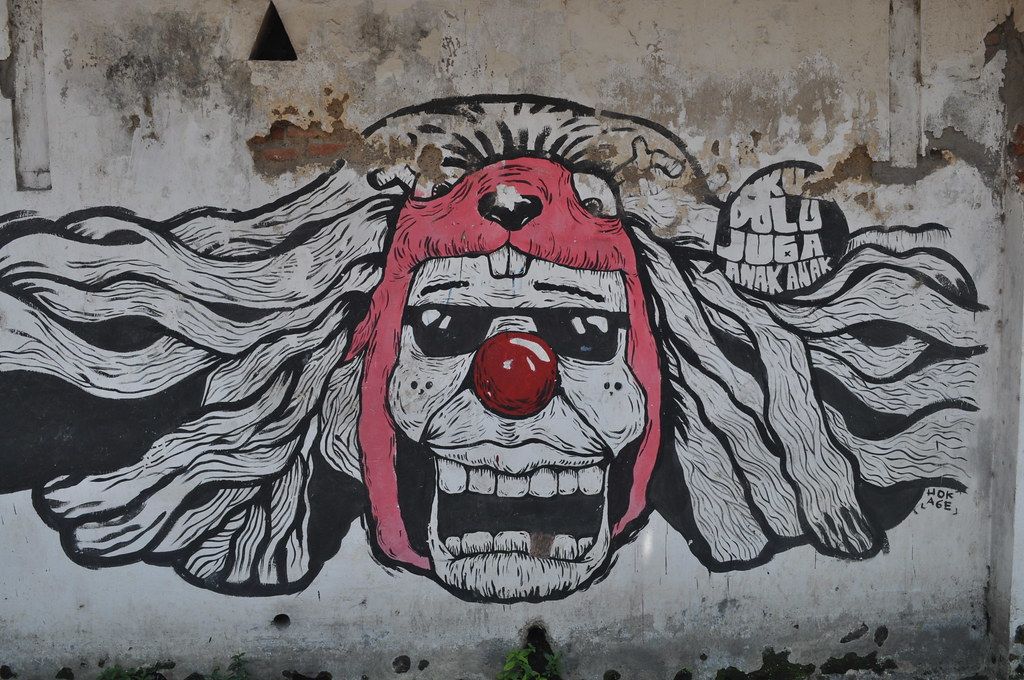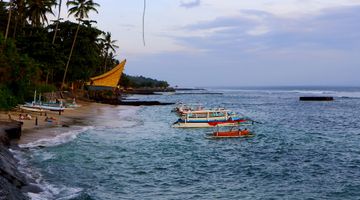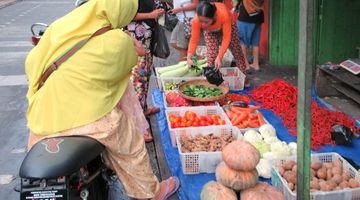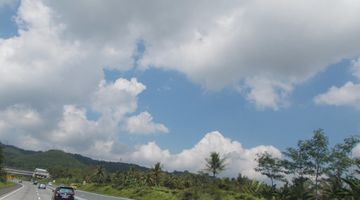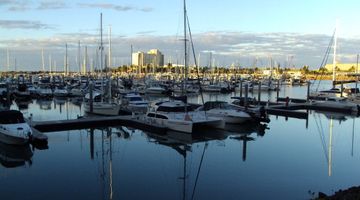Semarang Indonesia – Your Quick Travel Guide
In a nutshell
The provincial capital of Central Java, Semarang is more of a business and transport hub than a tourist destination; but for those who enjoy Dutch colonial architecture, history and bustling city life may find that this underrated and endearing city will come to surprise you.
Why go to Semarang
Many travellers use Semarang as a gateway to head towards the more well-known places such as, Kalimantan or Karimunjawa; but for those who have a few extra days, Semarang promises a few treasures of its own.
An absolute heaven for travellers with an interest in architecture, Semarang boasts beautiful colonial-style structures and edifices and a walk around Kota Lama (the Dutch city centre) is a wonderful treat for those with an appreciative eye. In recent years the city has experienced an increase in local tourism perhaps as a result of the initiative to restore and reconstruct many of its old buildings and landmarks; and Gereja Blenduk, a copper-domed church from as far back as 1753 has even contested for UNESCO World-Heritage status.
For travellers who enjoy the cultural and historical backstory of the city they’re visiting, Semarang is filled with incense-shrouded temples; bustling Arab markets; an authentic Chinatown; a historic harbour to stroll around and explore on foot; delicious, local eateries and restaurants; and even a couple of museums and a contemporary art gallery. A juxtaposition of olden-day churches, mosques and Hindu and Buddhist temples contrasts starkly with several glitzy shopping malls, modern-day buildings and corporate-style hotels. Anyone who enjoys seeing an authentic fusion of old and new will relish in the beautiful merging of Semarang’s sights and attractions.
When to go to Semarang
Known fondly as the “hot city” Semarang is well-known for its sunny weather and warm climate. Early morning sightseeing is advisable in the year-round hot and humid city with May to September offering the driest months. The month of October brings in the monsoon season and the rain falls steadily from October until April. Probably not ideal for those exploring the sights on foot.
Where to stay in Semarang
While the majority of Semarang’s visitors aim to satisfy the needs of business travellers, the city is slowly jumping onto the backpacker band-wagon and building up more and more hostels in the centre of the city to cater for the budget-conscious crowd. Jalan Kauman offers backpackers an assortment of hostels to pick and choose from, and we’d recommend exploring the accommodations here prior to booking and thereafter making an informed decision.
Accommodation in general is very affordable and travellers will by and large be offered deals that are excellent value for money. As a result of catering to the corporate professionals, many of the accommodations have excellent facilities, gorgeous swimming pools and high-end fitness centres. Affordable chain hotels are here in abundance and offer backpackers with a bit more money, wonderful deals with reliable facilities and well-trained staff. For those wanting a bit more of a personal touch and charming feel, quaint guesthouses can be found in the suburbs just outside of the city centre.
What and where to eat in Semarang
Influences of Indonesian, Chinese and Indian – the food in Semarang is mostly a harmonious local blend, delicious and very very cheap. Scattered all across the city is a bustling community of hawker-style food stalls, local warungs (restaurants) and canvas tents whipping up scrumptious meals once the sun goes down. What they may lack in hygiene and health and safety standards, they more than make up for in authenticity, local flavour and a unique cultural experience. An open lot near to Jalan Pandanaran Street, Simpang Lima, and the campus in front of Dipongoro University offer excellent street-food at very reasonable prices. Be sure to try a few local specialities, such as bandeng presto (boneless, pressure-cooked milkfish), wingko babat (flavoursome sticky rice and coconut), Loenpia Semarang (crispy spring rolls with bamboo shoots, fried egg and prawn filling), pisnag plenet (grilled banana with an assortment of toppings), and es teler durian (a refreshing durian beverage consisting of shaved ice, durian, fruits and syrup).
How to get around Semarang
As Semarang is not all that pedestrian-friendly, getting around the city is done either by renting a car of your own, using a taxi, or taking a bus or minibus.
We’d recommend using a taxi for shorter distances and especially if in a group of three or four people as taxis here are pricier than buses, but ideal if travelling with larger budgets or if you’re able to split the fare amongst a few travellers.
For travelling further distances around the city and visiting the sights and attractions, we’d suggest using mini buses (locally known as angkot or daihatsu) or grabbing a ride in a bus (known as damri). The minibuses ply many journeys around the city and will have their destination written on the front of the bus in an ‘origin – destination’ style format. Many locals are able to speak English and will kindly point you in the direction of the nearest bus stop. Fortunately the English is generally good enough for your bus driver to assist you in ensuring that you hop off at the correct stop.
How to get to and from Semarang
By air
Being a major transport hub, Semarang has many international and domestic flight connections, as well as a decent intercity train network and a working harbour. Semarang's Airport is called, Achmad Yani International Airport and fortunately it is fairly close to the heart of the city. There are several daily flights connecting Semarang with other major cities within Indonesia. Airlines plying these routes include, Lion Air, AirAsia, Garuda Indonesia and Sriwijaya Air. International destinations that connect to Semarang are Singapore via SilkAir and AirAsia, and Kuala Lumpur in Malaysia also via AirAsia.
By train
Travellers can also get in and get out of Semarang easily via railway and the city is linked to Jakarta, Surabaya and Bandung via train making these connections a simple and straightforward affair. The main train station is Tawang which is situated close to Kota Lama and offers mostly business and executive-class trains with a handful of economy trains. All additional economy-class trains can be found at Poncol Station two kilometres south west of Tawang Station.
The train leaving for Jakarta is a bright and early 5am departure on the Argo Murial Express train but an overnight train is also possible for those who want to spend an additional day exploring the city. The fastest trains between Semarang and Jakarta are around six hours but some trains can take up to nine hours. Other trains bound for Jakarta leave throughout the day (6am, 11:30am, 4pm, 10pm, 10:40pm and 11:30pm) and travellers will have no problem plying this popular route. Ticket prices will vary depending on the train, as well as the class of the train. Economy tickets cost anything between IDR 130,000 to IDR 260,000 for a one-way ride. Executive or first-class trains cost between IDR 280,000 to IDR 500,000 for the same route but with the added benefits of air-con, comfortable, reclining seats and more leg-room.
The journey from Semarang to Bundung takes around 8 hours and costs between IDR 150,000 and IDR 360,000. Trains depart for this route at 5:35pm and 9pm. Surabaya is another popular route and only takes around 4 hours. Ticket prices vary significantly and can range from IDR 50,000 to a whopping IDR 500,000. Trains depart Semarang at 1:45am, 3:10am, 7:10am, 11:55am, 3:10pm and 10:50pm.
By bus
Lastly, for travellers wanting to arrive or depart via bus, the main bus terminal in Semarang is Terboyo, five kilometres east of Kota Lama. This bus terminal is in dire need of an upgrade and traffic jams heading to the bus terminal are common and can add on a significant amount of time to your journey. Bus routes on the Trans Semarang Bus Service include the one-day journey to Denpasar for around IDR 350,000; the eight-hour journey to Surabaya for between IDR 60,000 and IDR 100,000; the four-hour journey to Yogyakarta for roughly IDR 45,000; and the six-hour route to Jakarta for IDR 150,000; amongst several other shorter journeys to nearby destinations.
Is Semarang a safe place to visit?
While Semarang is considered to be a fairly safe city with friendly, helpful locals; it still pays to be cautious and careful when travelling within the country.
Do not carry too much cash around with you and be mindful of wearing flashy jewellery when walking late at night or travelling on public transport. It’s also important to try and avoid empty train carriages especially if travelling with expensive camera equipment or expensive technology as petty theft does occasionally occur.

